Potrebujeme váš súhlas na využitie jednotlivých dát, aby sa vám okrem iného mohli ukazovať informácie týkajúce sa vašich záujmov. Súhlas udelíte kliknutím na tlačidlo „OK“.
ASTM D4226-11
Standard Test Methods for Impact Resistance of Rigid Poly(Vinyl Chloride) (PVC) Building Products
Automaticky preložený názov:
Štandardné skúšobné metódy pre odolnosť proti nárazu Pevný poly (vinylchloridu) (PVC) stavebné výrobky
NORMA vydaná dňa 1.9.2011
Informácie o norme:
Označenie normy: ASTM D4226-11
Poznámka: NEPLATNÁ
Dátum vydania normy: 1.9.2011
Kód tovaru: NS-26494
Počet strán: 8
Približná hmotnosť: 24 g (0.05 libier)
Krajina: Americká technická norma
Kategória: Technické normy ASTM
Kategórie - podobné normy:
Anotácia textu normy ASTM D4226-11 :
Keywords:
brittle failure energy, building products, failure energy, falling weight, impact test: Impact resistance--plastics, Impact testing--plastics, Plastic sheet and film, Rigid plastics, ICS Number Code 83.080.20 (Thermoplastic materials)
Doplňujúce informácie
| Significance and Use | ||||||||||
|
The impact strength values obtained on the flat sections of a building product profile are relevant only to the flat section that has been tested and these values do not necessarily indicate the impact resistance of the whole product, which is affected by the configuration of the profile (that is, corners, ribs, etc). Constant weight and variable height, employed in these test methods, allow the velocity of impact to vary and, therefore, by Procedure B, can determine the energy of ductile-to-brittle transition, which cannot be determined if a variable weight is dropped from a constant height. These test procedures have been found to be useful elements in rigid poly(vinyl chloride) (PVC) building product characterization. Compound qualification, finished product quality control, environmental and weatherability research and development studies, and fabrication tolerance prediction constitute useful applications. Choice of the specific impactor head configuration used is related to a variety of product attributes, such as specimen thickness and product toughness as well as abstract factors, such as the anticipated mode of failure in a specific application. The geometric uniqueness of the impactor head configurations prevents any comparison or correlation of testing results on samples tested with differing impactor head configurations. In general, the conical impactor, C.125, is useful to ensure failure of thicker specimens where the H.25 impactor caused no failure. Note 2—Equivalent surface conditions are more likely to occur when specimens are prepared by compression molding or extrusion than by injection molding. When comparing different samples tested with the same impactor head configuration, impact resistance shall be permitted to be normalized for average specimen thickness over a reasonably broad range (for example, 1 to 3 mm). However, this should only be done when the surface conditions listed in 6.1 are essentially equivalent.
|
||||||||||
| 1. Scope | ||||||||||
|
1.1 These test methods cover the determination of the energy required to crack or break rigid poly(vinyl chloride) (PVC) plastic sheeting and profile flat sections used in building products, as well as extruded or molded test samples, under specified conditions of impact from a freefalling standard weight striking an impactor with either of two configurations in contact with the specimen. 1.2 Two test procedures are included: 1.2.1 Procedure A, used to determine minimum impact energy required to cause failure (hole, crack, split, shatter, or tear). 1.2.2 Procedure B, used to determine minimum impact energy required to cause brittle failure. 1.3 The values stated in inch-pound units are to be regarded as standard. The values given in parentheses are mathematical conversions to SI units that are provided for information only and are not considered standard. Note 1—There is no known ISO equivalent to this standard. 1.4 The text of this standard references notes and footnotes which provide explanatory material. These notes and footnotes (excluding, those in tables in figures) shall not be considered as requirements of this standard. 1.5 This standard does not purport to address all of the safety concerns, if any, associated with its use. It is the responsibility of the user of this standard to establish appropriate safety and health practices and determine the applicability of regulatory limitations prior to use. Specific precautionary statements are given in Section 8. |
||||||||||
| 2. Referenced Documents | ||||||||||
|
Podobné normy:
Historická
1.12.2009
Historická
1.11.2008
Historická
1.5.2011
Historická
1.4.2010
Historická
1.4.2006
Historická
1.12.2011
Odporúčame:
Aktualizácia technických noriem
Chcete mať istotu, že používate len platné technické normy?
Ponúkame Vám riešenie, ktoré Vám zaistí mesačný prehľad o aktuálnosti noriem, ktoré používate.
Chcete vedieť viac informácií ? Pozrite sa na túto stránku.


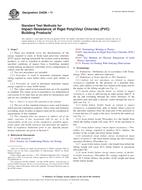
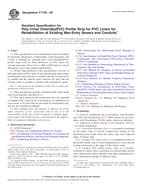 ASTM F1735-09
ASTM F1735-09 ASTM F1741-08
ASTM F1741-08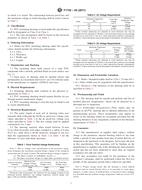 ASTM F1742-03(2011)..
ASTM F1742-03(2011).. ASTM F1759-97(2010)..
ASTM F1759-97(2010)..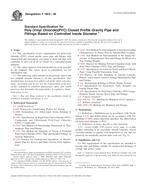 ASTM F1803-06
ASTM F1803-06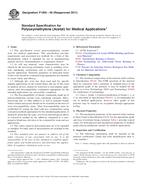 ASTM F1855-00(2011)..
ASTM F1855-00(2011)..
 Cookies
Cookies
